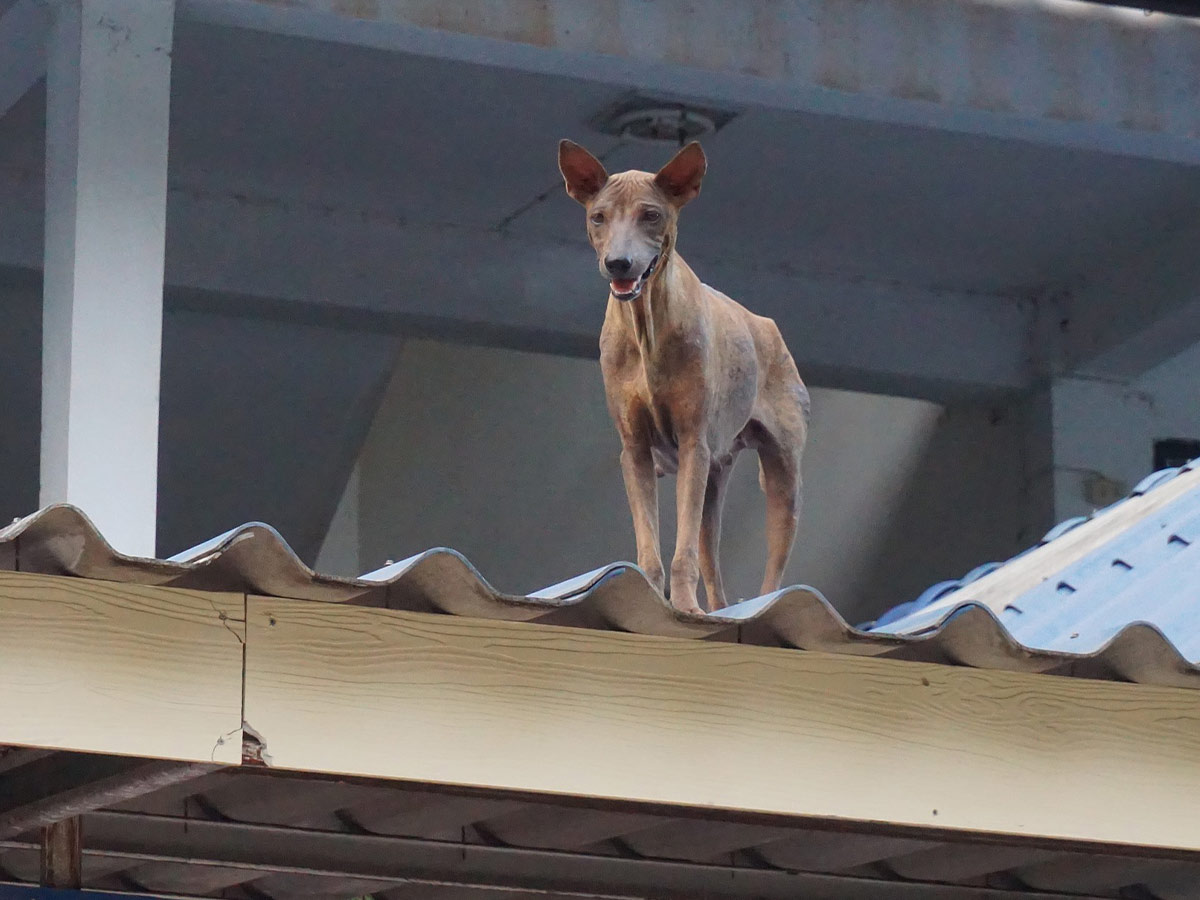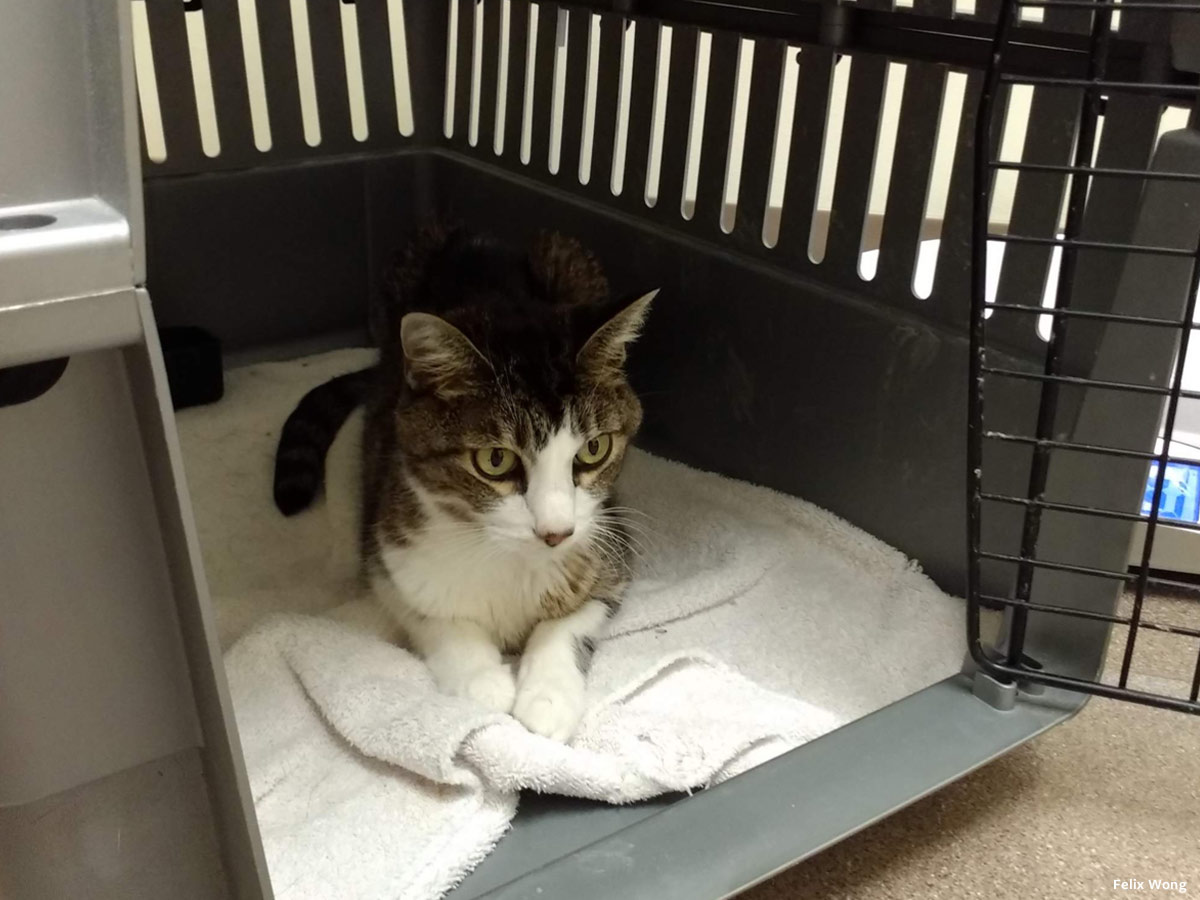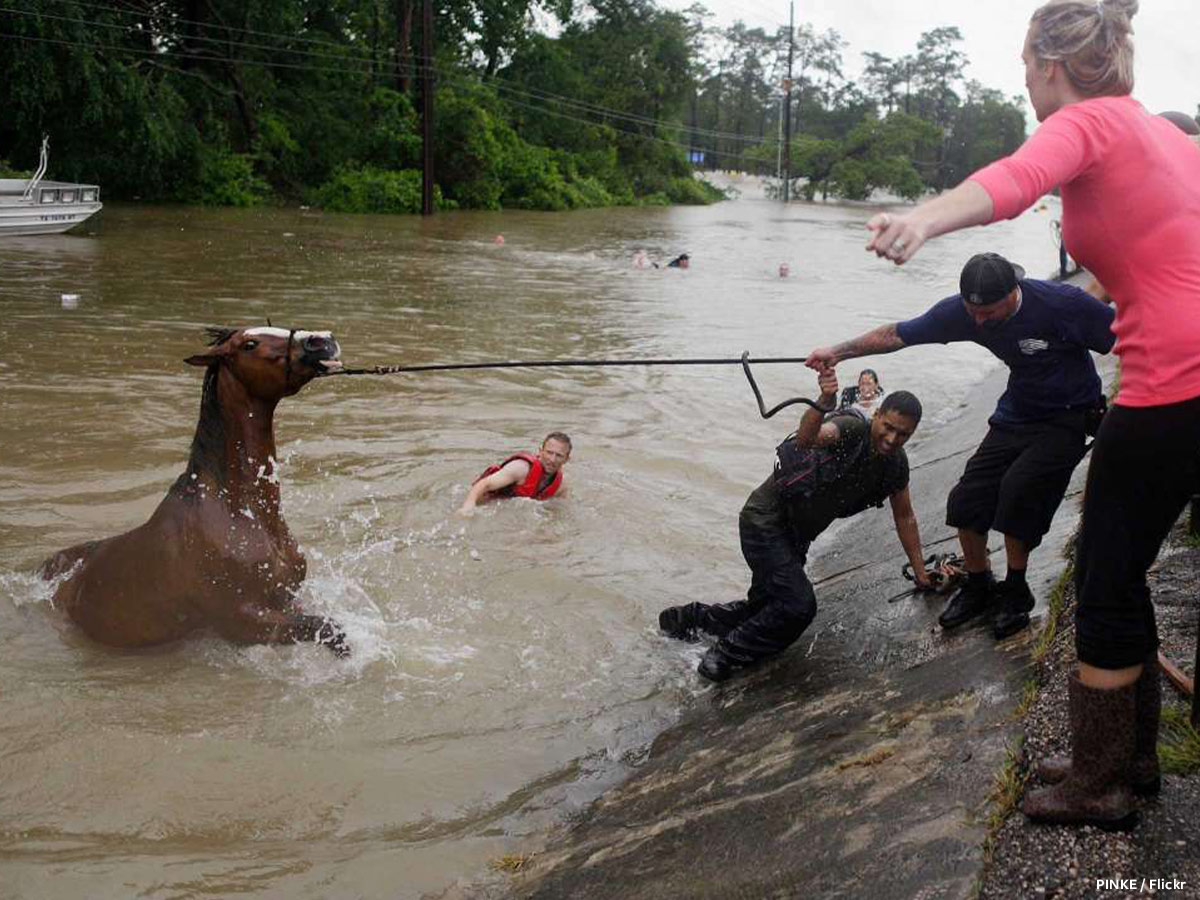If the current pandemic has been a reminder about anything, it’s that disaster can strike without warning, and upend our lives indefinitely. While disasters can come in many forms, ranging from financial setbacks and health issues to natural disasters, among other things, we should always have a plan in place that includes how our animal companions will be cared for. Find out what you can do to be ready ahead of time, and during an emergency.

Be Prepared: Get Everything Ready Before the Disaster
Before a disaster hits, there are a number of things you should do as soon as possible to ensure your animals are adequately prepared and ready to travel if they need to.
You should:
- Make sure your required vaccinations are up-to-date - Ensure that your animals’ vaccines are current under your government’s regulations. Shelters and other locations may require proof of current vaccinations in the hopes of reducing the spread of disease, so this is absolutely crucial.
- Make sure your animal companions have visible ID - Ensure that all dogs and cats are wearing breakaway collars that include identification tags with up-to-date information.
- Get microchipping - Ensure your animal companions are microchipped by their veterinarian, so they can be identified by other vets and animal shelters. You can associate contact information with the chip, including that of friends or relatives who reside in the area.
- Establish a designated caregiver - Plan with neighbors, friends, or relatives who live nearby to ensure someone will care for your animals in the event that you are unable to. Give them a key and a list of your animal’s needs and supplies. Provide detailed instructions so they have everything they need.
- Alert first responders to animals in your home - A pet safety sticker is a sticker you place on or inside your front door that specifies how many animals are in the house, along with your contact information. They also give you the opportunity to write “EVACUATED” on them in case you have already left the home, so rescue workers don’t waste time. Tip: In Defense of Animals monthly supporters get a free In Case of Emergency sticker. Sign up now!
Prepare a Disaster Kit So You’re Ready to Go
Consider preparing two kits, one larger kit for if you are sheltering in place, and one smaller kit in case you need to evacuate. Keep both of these kits readily accessible and in durable containers that can travel easily.
Things to include in your kit:
- List - Attach a list on the top of your supplies if there is anything you use regularly that isn’t practical or affordable to have duplicate items such as medical equipment (ie a nebulizer for immune compromised companion rats). In an emergency, it is easy to miss an important item or two that are essential to your companions’ well-being and difficult to replace on the road.
- Food - Include one week’s worth of canned or dry food and treats in an airtight, waterproof container, along with a food bowl and can opener if needed. Rotate food every three months to ensure it stays fresh. For larger animals, this can mean pounds of food.
- Water - Include one week’s worth of bottled water and a water bowl. Some larger animals may need dozens of gallons of water per animal per day.
- Medicine - Include an extra supply of any medications your animal takes on a regular basis in a waterproof container, along with copies of any related medical records.
- Sanitation Supplies - For animals who use a litter box, include their preferred kind of litter, litter box, litter scoop, paper towels, plastic trash bags, liquid dish soap, and disinfectant. Have bags for picking up after dogs.
- Leashes, harnesses, and carriers - Include one leash, harness, or carrier for each animal who will need to be transported unless they’re small animals such as birds, rats, or mice who usually prefer to travel together with their own species. Ensure harnesses and leashes have ID tags, and carriers have your contact information written on them. Carriers should be large enough to allow your animal to stand and turn around comfortably, as they may be restrained in them for extended periods of time.
- Comfort items and preferred bedding - These can include a favorite toy or a familiar blanket or bed, or lots of clean cloths and towels to swap out soiled carriers.
- Current photos - Include current photos of yourself with your animals in case they get lost. Since many animals look alike, if you become separated this will help document guardianship and allow others to assist in the search.
- Documents - Include copies of your animal’s registration information and other relevant documents in a waterproof container and have them available electronically. This should include medical records and proof of vaccinations. It is also wise to include details of your animal’s feeding or medication schedules and behavioral issues, along with the name and number of your veterinarian.
Remember, food and medications spoil, so fresh items must be swapped into your emergency kit on a regular basis.

Be Ready to Shelter in Place, or Evacuate
Depending on the emergency, you may have to either shelter in place or flee, and you should be ready for either scenario.
Regardless, when it comes to small animal companions, try to keep them indoors with you during an emergency, so that you can maintain direct control over them.
Animals may become disoriented and panic during a disaster that forces them to flee your shared home, particularly if that disaster has impacted visual or scent markers they would usually use to find their way home. New hazards may be present, including fire, spilled chemicals, or sharp objects. If they become disoriented, they can wander far from home.
Sheltering in Place
There are a number of ways you can be prepared for the possibility that you remain on your property during an emergency:
- Be sure the address of your property is clearly visible from the road.
- Post detailed instructions around your home, barn, or trailers to inform any emergency workers who may arrive about your animals and their needs. Include a current list of all animals, their location, and details about feeding, vaccinations, and tests.
- Perform regular safety checks on all utilities, wiring, buildings, and facilities around your home or out buildings.
- Reinforce all buildings with hurricane straps and other measures. Remove or secure anything that could blow around in strong winds, such as propane tanks, or trailers.
- Get a generator, which could prove essential, especially if you have equipment necessary to the well-being of your animals.
- Ensure you’ll have adequate water. Municipal water supplies and wells may be contaminated during an emergency. If possible, install a hand pump and obtain enough large containers to water all the animals in your care for at least a week.
- Determine in advance the safest room in your house. This is your designated safe haven. This room should not have windows, heavy furniture that could easily topple, or toxic chemicals out in the open. In the event of flooding, move to the highest floor in the house.
Evacuating
If it’s not safe for you, it is not safe for your animals. They should never be left behind if you are evacuating for your own safety, no matter what species they are.
Our animal companions depend on us to care for them, and if they need to flee your property — say, to escape a fire or a flood — they can be prevented from doing so by doors, fences, and their cages, and leaving them behind can have devastating consequences.
It’s also important to get out quickly. Do not wait for a mandatory evacuation order. Roads will be clogged and other conditions like smoke or thunder may upset your animals and make them more difficult to move — waiting until the last minute could be fatal to them, and yourself.
Before you go, be sure to turn off circuit breakers on your way out the door.
Know Where You Are Going
Determine, in advance, where you will go outside of your immediate area in the event of a disaster.
If you plan to stay with friends or family, let them know in advance and have their phone number and address readily available.
Ask your veterinarian if they can recommend preferred boarding kennels or facilities outside of your immediate area.
Some shelters may provide shelter for animals in an emergency. Call around and ask.
If you may have to stay in a hotel or shelter, note that many of them do not accept animal guests other than service animals. Most American Red Cross shelters, for example, sadly do not accept animals other than service animals. Determine in advance which do, and keep their names and numbers readily at hand.
The following websites will help you find accommodations for your small animal companions:
Bringfido.com
Dogfriendly.com
Pet-friendly-hotels.net
Petswelcome.com
PetTravel.com (International)
Tripswithpets.com
Airbnb and Booking.com also allow you to search for animal-friendly accommodation.

Special Considerations for Large Animals
If you remain on your property, you will need to decide whether to confine large animals or leave them outdoors. They are not necessarily safer inside or outside, but the circumstances of your situation can help determine how best to keep them safe.
Barns
Barns can be live savers, or life takers. In one scenario, they keep your animals safe. In another, they trap them and lead to their death. Barn fires or collapse are one of the leading causes of death of farmed animals.
In the case that you are sheltering in place, it is essential that you plan ahead to either keep your animals inside, or turn them out.
Fire prevention is key. Prohibit smoking near the barn. Limit the use of electrical appliances within barns, and inspect electrical systems regularly. Keep aisles and doors free of debris and equipment. All barns should be equipped with fire extinguishers and smoke and heat detectors.
Have a barn emergency kit on hand that includes a chain saw and fuel, saw, flashlights and batteries.
Keep halters ready for horses. Other forms of identification for larger animals include leg bands, tags, marking crayons, and clippers for shaving information into their coat. Information conveyed should include your animal’s name, your name, cell phone number, and any urgent medical needs.
Post emergency phone numbers at each telephone and at each entrance. Include your barn manager, veterinarian, and staff or boarders if you have any. Also include your street address to relay to 911 or emergency services.
Let Them Out
In some scenarios, keeping your animals confined may be dangerous. Fire and flood are two obvious cases. Also if winds will be higher than you believe the structures can withstand. If there are power lines near the barn, this also may be cause to turn your animals out. They may also be safer outside if they can become overcrowded indoors, and potentially injure themselves and each other if they get scared or panicked.
If you’re going to turn them out, remove all barbed wire and reroute permanent fencing so that animals can move to high ground in a flood and to low areas during high winds. Animals often know how to take care of themselves, you just have to give them the room to do so.
If your property is less than one acre large, has prominent overhead power lines, or barbed wire fencing, you should evacuate.
Fleeing with Horses and Other Large Animals
For horses and other large animals such as goats, burros, sheep, pigs, and cows, make sure you have access to trucks and the right kind of trailers suitable for transporting them, or an agreement to buddy up with someone who does. Practice loading and unloading regularly, so they’re used to the process — this isn’t something you’re going to want to figure out with them when you’re in a hurry.
If you’re unable to manage all of this yourself, make arrangements ahead of time.
Also note that some areas will have designated fairgrounds, or other areas where you can take large animals during emergencies. Identify these areas before the emergency arrives.
If large animals are evacuated to a public location:
- Minimize the contact they have with other animals
- Protect feed and water from contact with wild animals including birds
- Swiftly deal with any tragic mortalities to limit the spread of infectious diseases
After The Disaster
Disasters can be difficult things for animals to live through, just as they are for us, but you can help them get through it and should keep a close eye on them. Regardless of whether they directly encountered a violent or dangerous situation, or were simply diverted temporarily from their usual schedule, your animal companion’s behavior may change after a disaster, and it’s not unusual for them to show atypical behavior, or to become aggressive and defensive.
Monitor your animals closely during and after the disaster. Has their behavior or mood changed? Are there signs they are struggling to adjust?
Keep your animal companions inside. Visual and scent markers they may have previously used to orient themselves may be gone, and they are at risk of getting disoriented and lost.
If problems do arise, consult your veterinarian.
Always be patient with your animals. You can reassure them that everything’s alright by spending quiet time with them, speaking to them gently, and making sure they have access to their favorite comfort toys.
In Conclusion
We sincerely hope that you will never need to use your emergency supplies except when rotating them for freshness. However, since the world is rapidly changing, it’s always best to be as prepared as possible. Please take the time to get ready in advance as it can be the difference between life and death.
Please consider sharing this resource with others who live with animal companions by using the sharing buttons on this page. We thank you for always striving to be the best guardian possible, even under challenging situations.

